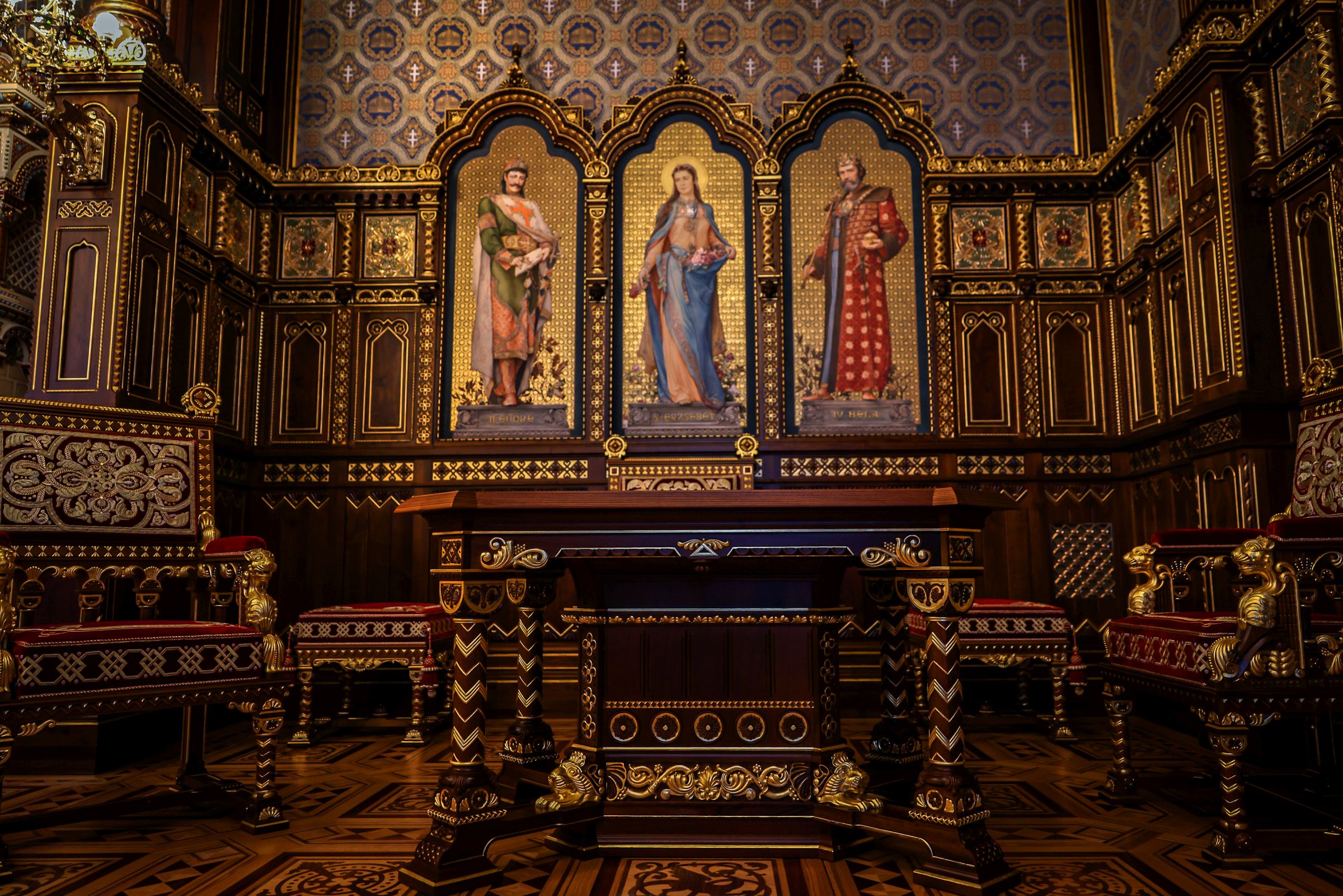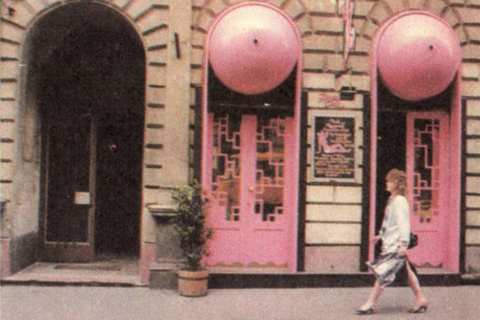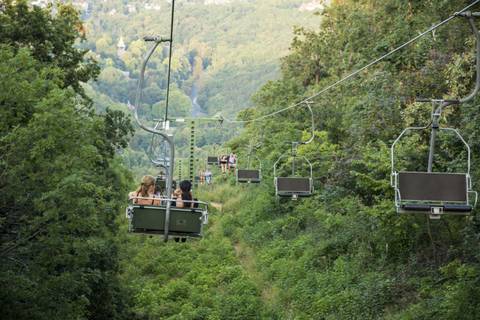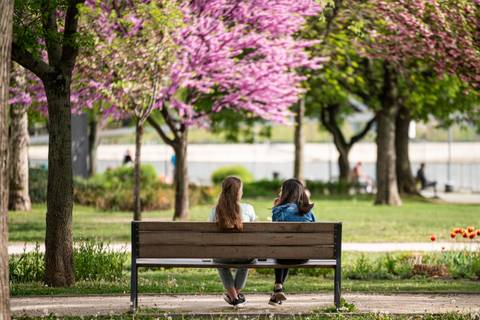The painstaking renovation of historic St Stephen’s Hall in Buda Castle is now complete, its glittering artefacts now on view to the public. Completely burnt out in World War II, this ornate interior dating back to the early 1900s has taken experts decades to piece together again in an attempt to reconstruct the hall in the most authentic way possible. This week, St Stephen’s Hall can be visited free of charge until 31 August.
Named after the founder of the Hungarian State, St Stephen’s Hall was one of the most significant interiors of the Buda Palace during the Dual Monarchy. Key architect Alajos Hauszmann oversaw work by most sought-after craftsmen of the day, ceramicist Vilmos Zsolnay, furniture maker Endre Thék and the Neuschloss brothers, responsible for the parquet inlay.
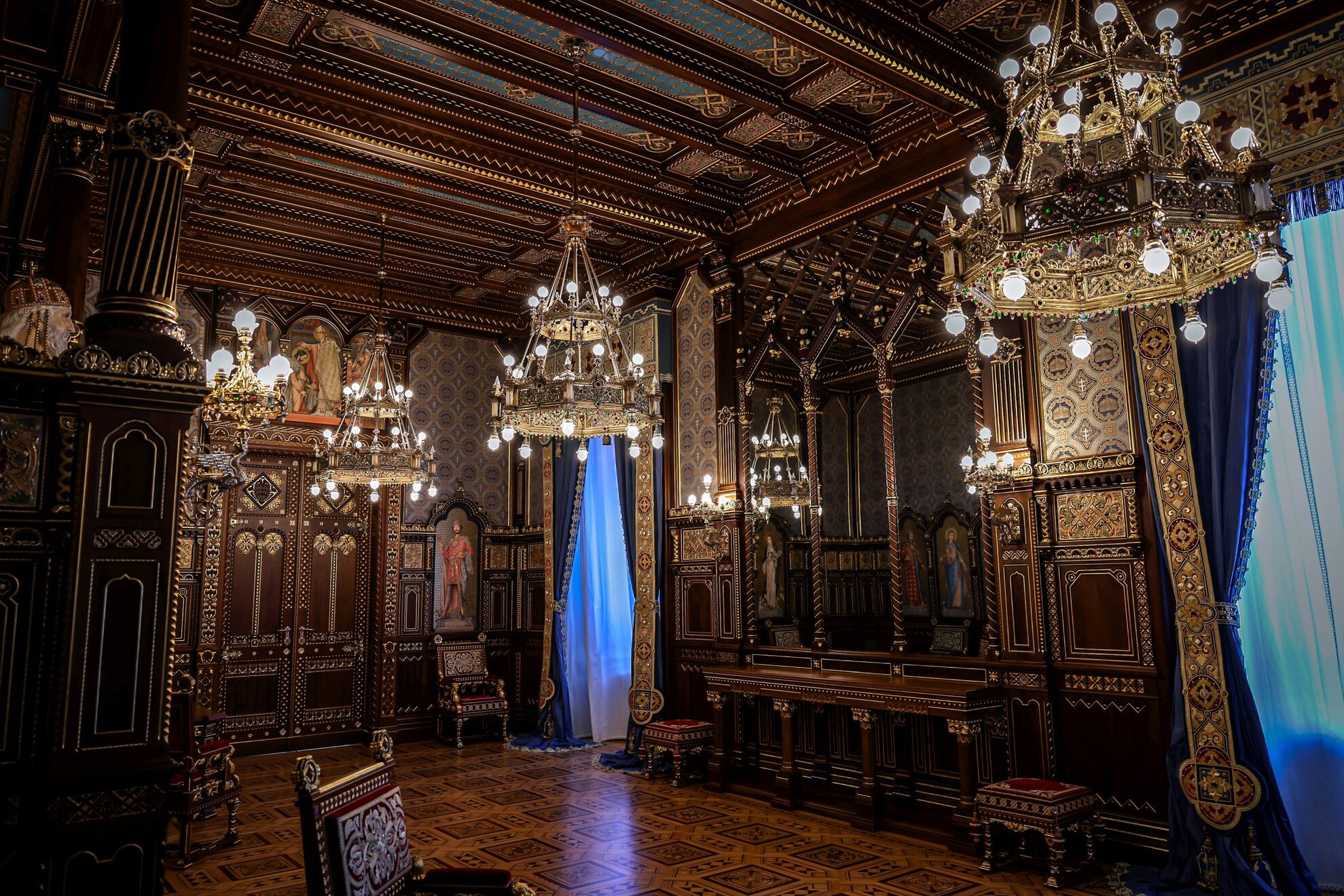
Its long-term restoration began with the southern connecting wing, the part most damaged during the Siege of Budapest in 1944-45. Its reconstruction did not begin until the post-Communist era, half a century later.
Book your visit
Admission must be reserved online here to allot visitors their particular time slot. Visits are by guided tour only,
each lasting 20 minutes. A limited number of places is also available without
reservation on certain tours. Tours run every day up to and including Monday,
31 August, 10am-6pm (last one from 5.30pm) and are free of charge.
From 1
September, hour-long tours, either by tablet or personal guide, will be available,
3,900 forints for adults, 1,950 forints for seniors, students and children.
Combined tickets with the Budapest History Museum are also available. Documentation
around the exhibition is in English and Hungarian. Further details here.
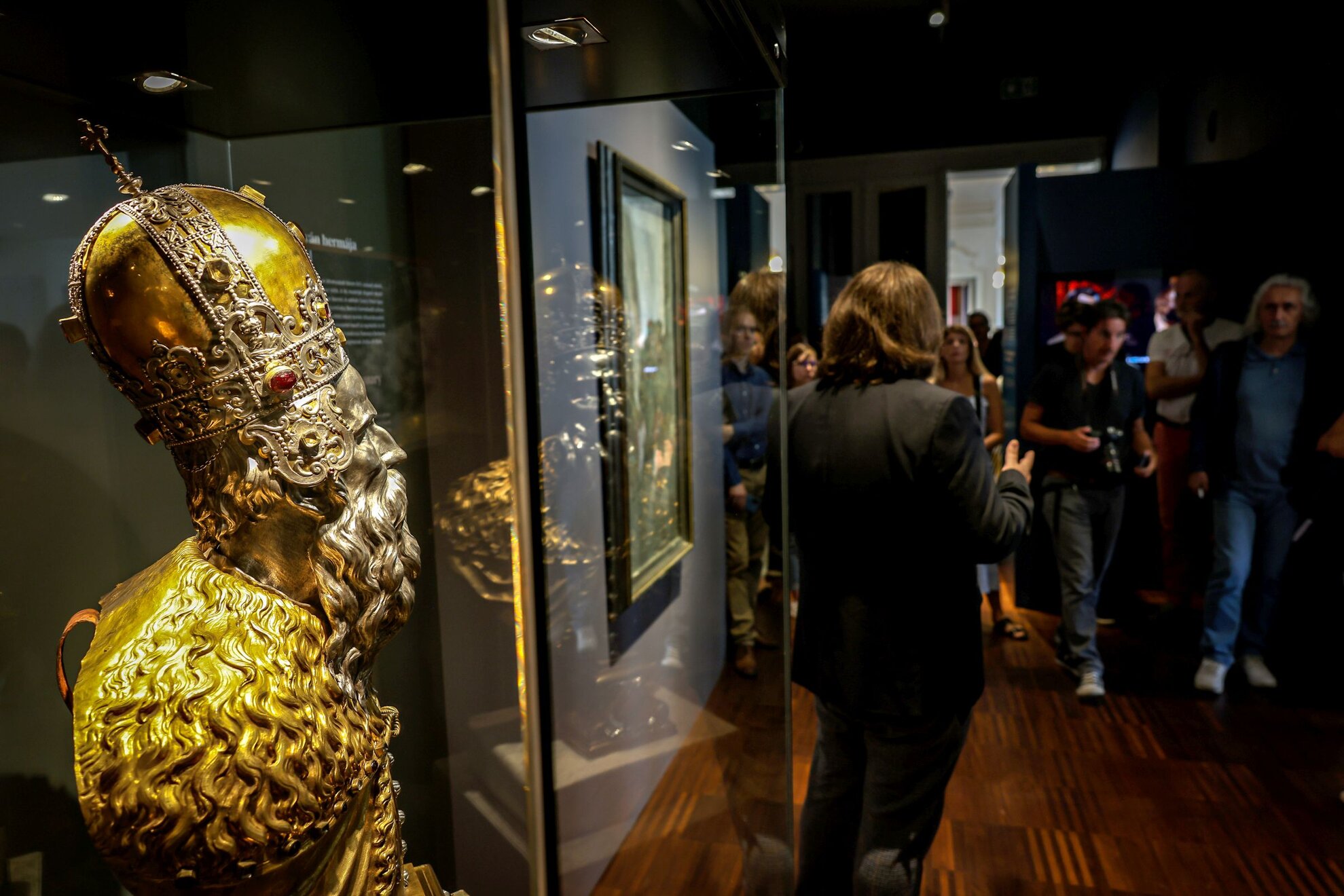
Columns and wall decorations created by Hauszmann and team were unearthed, while contemporary visualisations and archive photos also helped experts to recreate the interior as authentically as possible.
In the corridor as you approach the hall, designers left bare, unplastered, archictectural detail on the wall, so these Hauszmann-era decorations can be seen in their entirety.
A short film in Hungarian explains to visitors how Hauszmann was not the prime mover behind the creation of St Stephen’s Hall more than a century ago, but Vilmos Zsolnay, whose factory in Pécs produced the famous bright tiling around the fireplace you can now see today. It was Zsolnay’s son who finished the whole project.
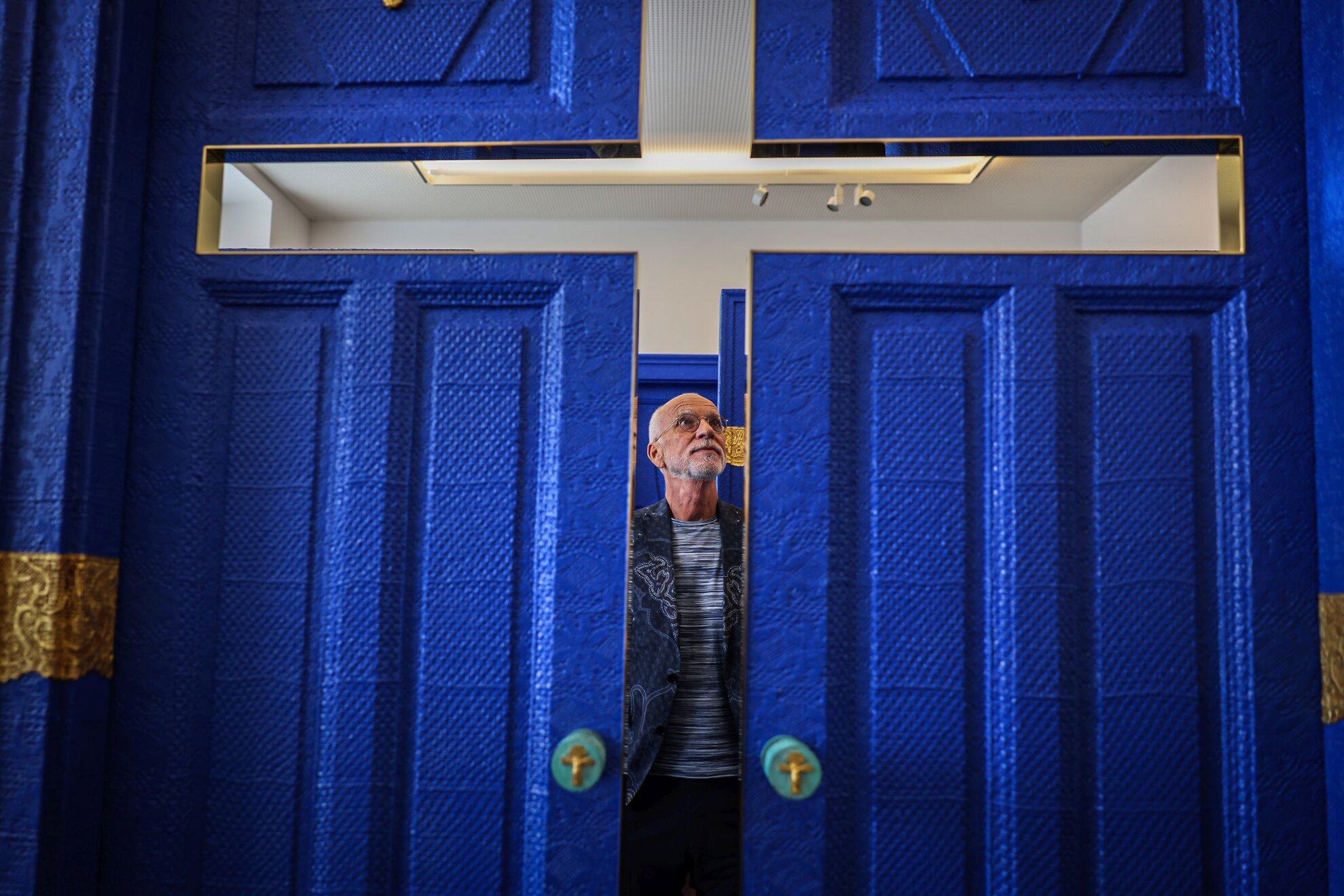
To showcase the historic detail and put it into context, famed UK-born, Hungaro-American artist Sam Havadtoy has created a ten-door installation, also on view to the public, part of the accompanying exhibition The Miracle of Buda Castle. A throne has been added for people to sit on and watch the film.
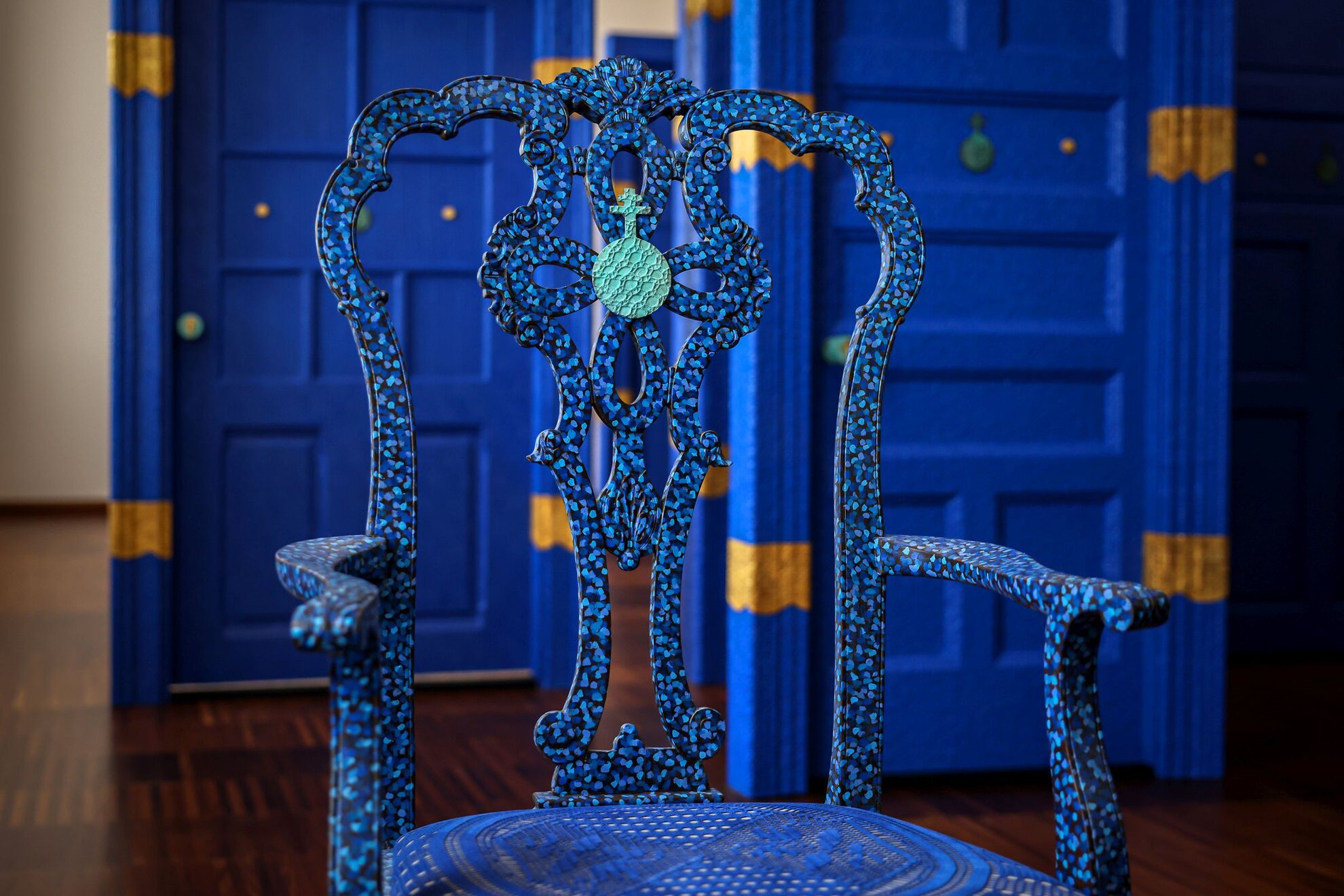
Havadtoy has based his work on The Admonitions, a literary work in Latin written around the 1010s laying out the principles of government. Although associated with St Stephen, at a time when he was founding the Hungarian State, it is now thought to have been created for him by a learnéd foreign cleric. In any case, Havadtoy has used the text of this document, unfamiliar to many Hungarians, as the starting point for his installation.
As well presenting the history of the hall and the life of St Stephen, one of the world’s largest herms, sculpted representations of the male form, is on show. Until now, this likeness of St Stephen has been preserved in Zagreb Cathedral.
Behind the row of blue Havadtoy doors, lies the room itself. First created in Endre Thék’s carpentry workshop, this elegantly carved interior impressed one particular visitor, Emperor Franz Joseph who, upon his arrival at the time, declared it to be "very beautiful".
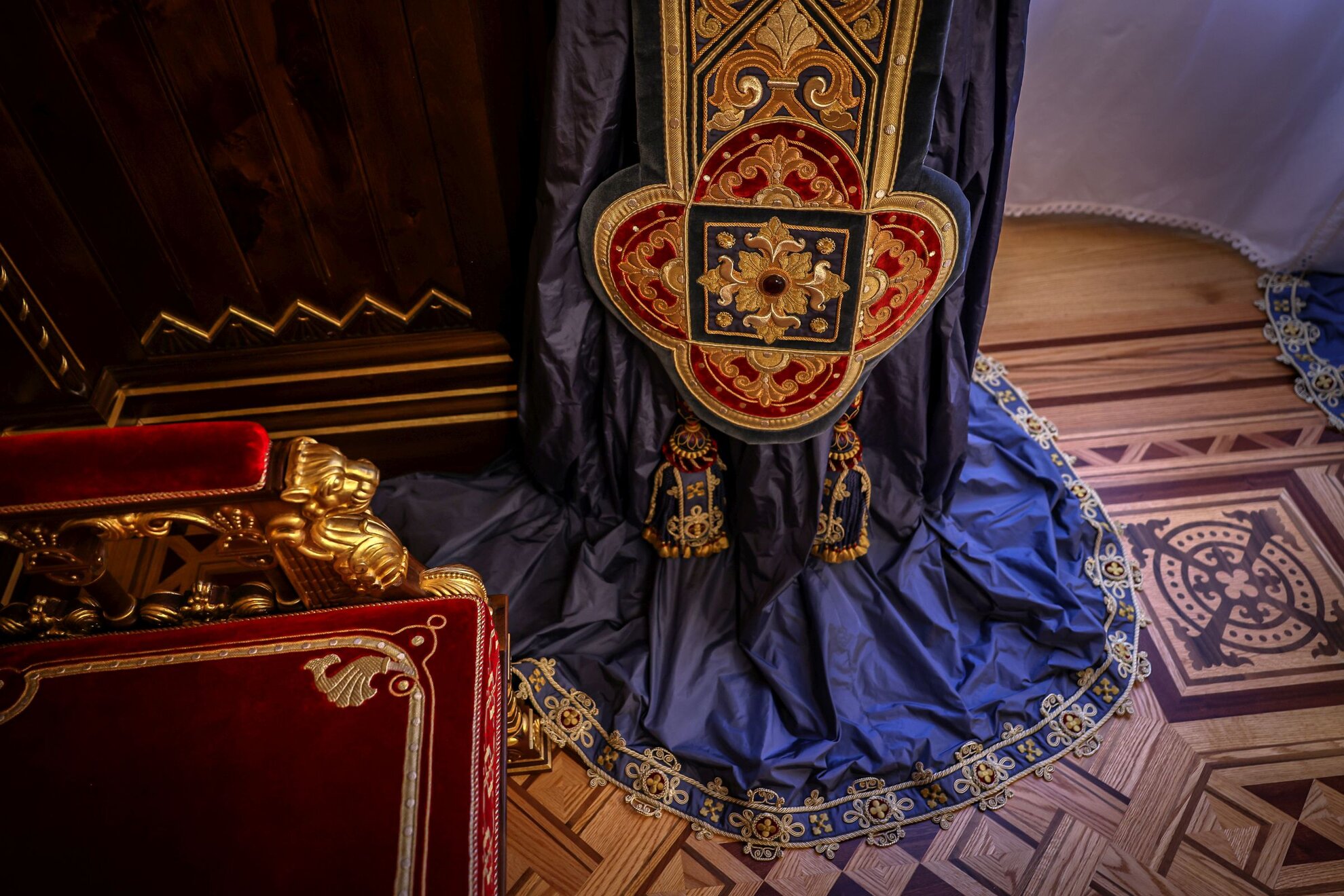
Before it was installed in the palace, the work was put on display at the 1900 Paris World’s Fair, where it won the Grand Jury Prize.
Today’s visitor would do well to marvel at each individual detail, of Zsolnay depictions in signature pyrogranite ceramic of the kings and saints of the House of Árpád in Hungary’s largest fireplace, and the ornamental carved ceiling. Objects aren’t cordoned off but touching their surfaces is not allowed as furnishings are adorned with 24 carat gold.
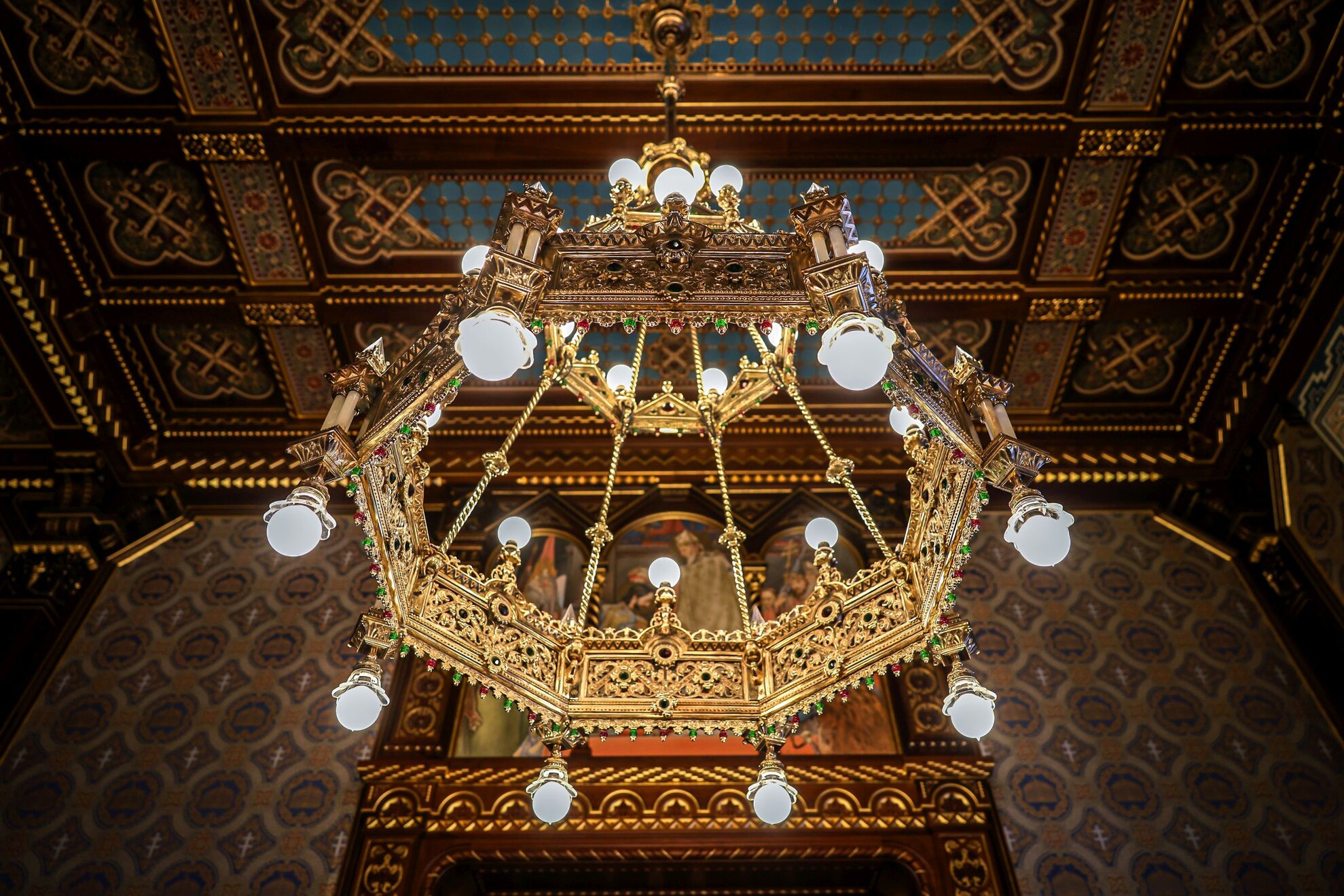
Note, too, the three 150-kilo chandeliers, whose bulbs light up according
to the interior temperature, and the ornate door handles, authentically
reconstructed.
This required not only an examination of archive photos, plans
and materials but even the old invoices for the various items. Designers were helped
by duplicates of the ceiling inserts which were found in the Zsolnay Quarter in
Pécs and by the discovery of a transcript in a villa on Lendvay utca, annotating the motifs and colours of the room.
The room was also functional. It was here that royal audiences and working
lunches took place, and it doubled up as a card room for the men while balls took
place.
In December 1916, the day before the coronation of Karl I, the chest containing
the Holy Crown was opened here, before being taken to Matthias Church for the
ceremony. Interestingly, the general public could visit the room as part of an
official tour, walking across its dragon-patterned parquet to admire the holy
relic linking back to the time of St Stephen, little realising that the following day would
be the last time it would play a ceremonial role.
St Stephen’s Hall
1014 Budapest, Szent György tér 2 (buildings E/F of Buda Castle).
Entrance across Oroszlános Udvar
All details here
